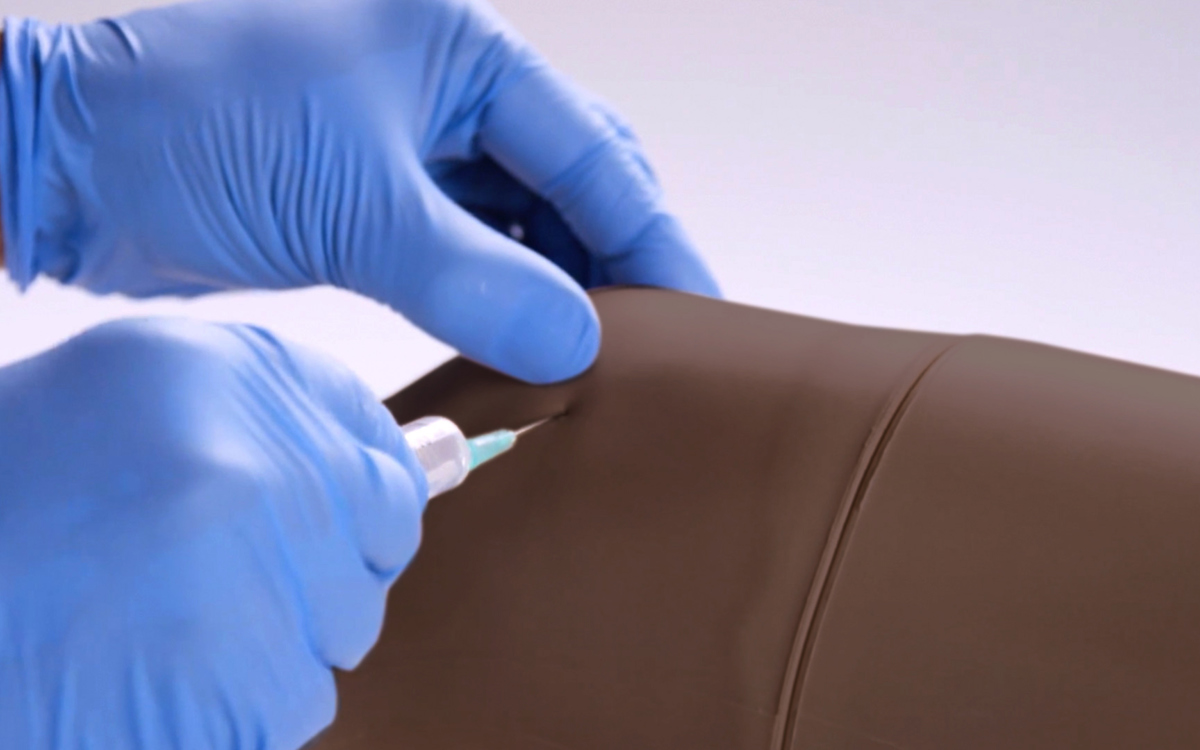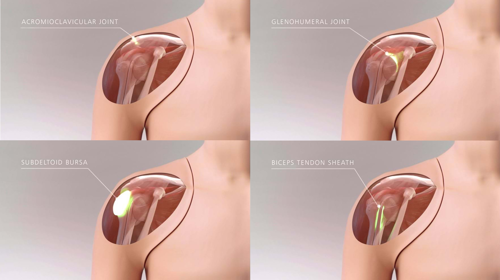Training & Treatment for Osteoarthritis: Joint Injection
As we age, our joints and their surrounding tissues can begin to degenerate, a condition known as osteoarthritis. This can cause pain, stiffness, and swelling, and often decreasing mobility in the affected joint.

According to the World Health Organization, there has been a 113% increase in osteoarthritis since 1990 which now affects abut 528 million people worldwide.1 And, “with ageing populations and increasing rates of obesity and injury, the prevalence of osteoarthritis is expected to increase globally.”1 While the condition occurs in both men and women, it is most prevalent in women over the age of 55.1
Although there is no cure for osteoarthritis, the most important treatment is exercise. Although many patients believe this could make the condition worse, the benefits gained from increasing muscle mass and losing weight will also strengthen the joints.2
The most common complaint of patients with osteoarthritis is pain, which can be treated conservatively with oral or topical analgesics. However, these often provide little relief leading practitioners to recommend the joint be injected with corticosteroids every 3-4 months.
With the increased numbers of osteoarthritis cases, there is a growing need to train more providers to perform joint injections safely. And, with the positive outcomes learned from other procedures, the use of ultrasound guidance may also become the standard of care for joint injection. A global survey related to joint injection showed the following practitioners being trained in joint injection techniques:
- Rheumatologists
- Radiologists
- Sports medicine specialists
- Orthopedic surgeons
- Physical medicine specialists
- Emergency medicine specialists
- Internists
- Pediatric Surgeons
- General Practitioners3
Additionally, the United States also trains Anesthesiologists, Neurologists, Podiatrists, Physician Assistants, and Advanced Practice Nurses to perform the procedures, often in their clinic office or established pain management centers.4
The most injected joints include the knee, shoulder, and hip, but also may include the foot/ankle, hand/wrist, or elbow. And, while many are accomplished through palpation of the joint, the need to learn ultrasound guidance is becoming more important globally.
Novice learners may begin with knee injections, as the anatomy is easily palpated.
Shoulder injections, often performed under ultrasound guidance, may be considered advanced injection training and can be more difficult to learn, as the anatomy provides many entry points, shown in the following diagram of injection sites:

Simulation training provides both novice and advanced learners the ability to gain confidence in joint injection for osteoarthritis or injury. A study focused on both knee and shoulder injections published by Military Medicine found that “simulation training can lead to increased medical provider self-confidence in performing musculoskeletal joint aspirations and injections in both clinic and austere settings.”5
Another study by Carstensen et. all, examined “how residents are trained and assessed in musculoskeletal US (MSUS), MSUS-guided and landmark guided joint aspiration and injection”. They found that “all training programs increased trainees’ self-confidence, theoretical knowledge, and/or practical performance…”.6
Limbs & Things is proud to offer a complete range of aspiration and injection trainers that improve both confidence and competence in palpation and ultrasound-guided joint aspiration and injection techniques. The models provide instant feedback for the trainee when a site is correctly located. Additionally, our palpation shoulder injection trainer has an accompanying app which allows trainees to view the 360° shoulder anatomy as well as receive expert guidance on best practice for joint injections.
References:
1 WHO OSTEOARTHRITIS
2 NHS TREATMENT AND SUPPORT OSTEOARTHRITIS
3 PRACTICE OF ULTRASOUND-GUIDED ARTHROCENTESIS AND JOINT INJECTION, INCLUDING TRAINING AND IMPLEMENTATION IN EUROPE
4 EFFICACY OF MUSCULOSKELETAL INJECTIONS BY PRIMARY CARE PROVIDERS IN THE OFFICE
5 IMPROVING SELF-CONFIDENCE OF MILITARY MEDICAL PROVIDERS WITH JOINT PROCEDURE SIMULATION
6 TRAINING AND ASSESSMENT OF MUSCULOSKELETAL ULTRASOUND AND INJECTION SKILLS – A SYSTEMATIC REVIEW
Did you like this article?
Share it on social media today, and remember to tag us!

